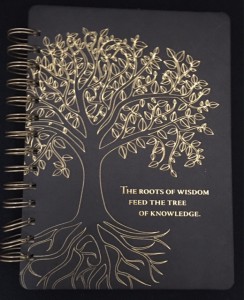[First posted June 10,2012.—Admin1].
The originators of the Christian Bible who decided to append the Hebrew Scriptures to the canon of the New Testament did not only tack it as a prequel but transformed it in subtle ways, then renamed it the “Old Testament.” Understandably so. Had they left it as it originally was, it would not perfectly fit their New Testament theology and make sense to the Greek or Western mind.
If you think about it, why transform the scriptures that are not yours to begin with? Why not simply add to yours in original form and text and translation? Does that make sense unless there’s an underlying agenda?
Don’t be surprised if Jews do not read the “Old Testament” in the Christian Bible. They read their Hebrew Scriptures, the TNK. Wonder why?
What specific transformations did the original Hebrew Bible undergo in the Christian Old Testament?
1. Order of Books — After the first five books of Moses, the books were rearranged following the logical progression of chronological order. The history of the beginnings of the nation of Israel from Genesis to Deuteronomy continued through historical narratives, Joshua, Judges, I & II Samuel, I & II Kings, I & II Chronicles, Ezra and Nehemiah.
Out of the blue, the book of Ruth was sandwiched between Judges and I Samuel, perhaps to follow the ancestry of David from whom Jesus would fit in both bloodline and kingly line.
Between this category and the last category of Prophets are the Wisdom Books which include Esther, Job, Psalms, Proverbs, ecclesiastes, Song of Solomon.
The OT five “major” prophets of Israel precede the nine “minor” prophets. There are only 3 major prophets in TNK, Isaiah, Jeremiah, Ezekiel. Daniel is relegated to the Ketuviim or the Writings, he was not considred a prophet but an interpreter of dreams just like Joseph. But without Daniel as prophet in OT, the book of Revelation in NT would not make much sense since its interpretation heavily depends on the images in Daniel.
By ending the Christian Old Testament with Malachi, the connection with a sequel, the New Testament, has been prepared because Elijah is supposed to return and there is speculation in NT who Elijah is, John the Baptist?
The Hebrew Bible ends with the book of Chronicles; there is good reason for it, for one of YHWH’s “anointed” or “messiah,” a gentile king, Cyrus of Persia, has announced the rebuilding of the Temple in Jerusalem. The final verse reads:
Whoever there is among you of His entire people — may HaShem his God be with him, and let him go up!
2. Number of Books —
- The Hebrew Scriptures have 24 books; the Christian Old Testament has 39.
- The Protestant Bible version split Samuel, Kings, Chronicles into I & II, then numbered the “minor” prophets as 12 separate books instead of being one book in the original Hebrew; it also split Ezra-Nehemiah which is counted as one book in the Hebrew Bible.
- The Catholic Bible Old Testament add the apocryphal books to their version, books that were not considered as sacred scripture by the Jews. Other versions have Pseudepigrapha, also not considered as scripture by the Jews.
3. Change of Hebrew Titles to Greek Titles —
Since the Hebrew Bible was translated into Greek and that translation was known as the Septuagint, the Greek titles simply took over and it is those titles that have been retained, even by some Hebrew Bibles that have been translated in English, just to help new readers familiar with the Christian Old Testament identify the book. Along with book titles, names of people, places, objects naturally underwent the same process, first in Greek, then further Anglicized to what we recognize today.
4. Mistranslation of verses used as prooftext, specifically to turn them into “messianic prophecies” pointing to Jesus Christ — Anti-missionary Jewish websites are the best links for specific studies relating to the mistranslation of these verses; we will try to get permission to reprint them in this series of articles.
We have many posts related to specifics regarding changes made from the original Hebrew text of the Hebrew Scriptures or TNK to the Old Testament text in the Christian Bible. You will find them listed under SITEMAP. For now this is just an overview. You, reader, should do your homework and check out the claims in this post, not swallow without question.



